Young Frankenstein: 10 Behind-The-Scenes Facts About The Mel Brooks Movie
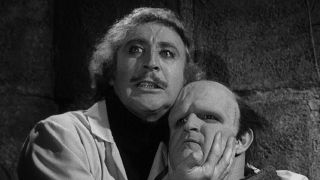
This year marks the 90th anniversary of the 1931 horror classic Frankenstein, but let us not forget his grandson Young Frankenstein, or Fronkensteen as he sometimes prefers.
Young Frankenstein from Mel Brooks and Gene Wilder is one of the funniest movies ever made while also being an incredible homage to the James Whale film that it spoofs. It is a blend of brilliant wit and physical comedy with an incredible cast of Wilder, Marty Feldman, Teri Garr, Peter Boyle, Cloris Leachman and Madeline Kahn that has stood the test of time. It even made it to the Great White Way, as a musical version hit Broadway in 2007 (ABC is planning on doing a live production of it for television).
But the 1974 film is the one we all come back to with countless rewatches. And it has plenty more to give as evidenced by the behind-the-scenes facts you can read about below. So let’s throw the switch and get into these Young Frankenstein behind-the-scenes facts.
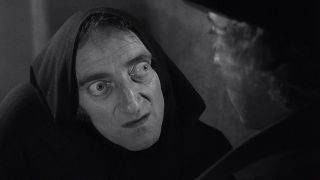
Brooks' First Payment For Young Frankenstein Was $57
Mel Brook is typically the creative force behind all his movies, but Young Frankenstein was actually an idea born of Gene Wilder. While Wilder said he wanted Brooks to direct Young Frankenstein from the start, Brooks has told the story on multiple occasions, including in the official Young Frankenstein: The Story of the Making of the Film book, as noted by Newsweek, on how he first became involved and his first payment for his work.
Brooks and Wilder were working on the irreverent western Blazing Saddles when one day when they weren’t filming Brooks noticed Wilder writing on a legal pad and saw the title Young Frankenstein. Brooks asked his star what he was working on and Wilder gave him the pitch, saying that it would be his dream for Brooks to write the movie with him and then direct it. Brooks asked if Wilder had any money on him. When the star said he had $57, Brooks said "It's a start,” and that he'd take it. The rest, as they say, is cinematic history.

Gene Wilder Was Insistent Mel Brooks Not Appear in Young Frankenstein
Apparently during that same make-shift negotiation on the set of Blazing Saddles, Wilder had one condition for Brooks to start working on the film: he could not appear in the film.
In an interview with Parade, Brooks recalls the request by Wilder:
CINEMABLEND NEWSLETTER
Your Daily Blend of Entertainment News
I said, ‘Am I such a bad actor?’ He said, ‘No, but you’re always breaking the fourth wall, and you’re always surprising and there’s a lot of anarchy in you. I don’t want it to be a crazy comedy. I want it to be a real movie with natural comedy.’ I said, ‘You’re absolutely right. That’s the way we’ll do it.’
Of course, Brooks does find his way into the movie, if only providing some off-screen voices, including the werewolf, a cart hit by a dart and Victor Frankenstein.
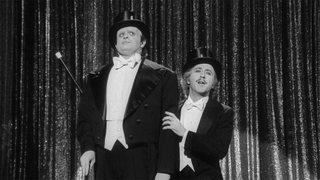
Brooks And Wilder Clashed Over ‘Puttin On The Ritz’ Scene
One of the most iconic scenes in Young Frankenstein is when the bold scientist shows the monster (played by Peter Boyle) to a group of distinguished scientists. To prove that he has control over his creation, Dr. Frankenstein and the monster do a song and dance number of Irving Berlin’s “Puttin on the Ritz.” However, it almost never made it into the movie as the scene put Brooks and Wilder were at odds.
As Wilder told Conan O’Brien in an interview from 2005, he would write during the day and Brooks would come over and look at pages at night and give him notes. When he came to the “Puttin on the Ritz” scene he had some notes, and Wilder was ready to fight back.
Wilder told O’Brien:
One night he came over and he looks at the pages and says, ‘You tap dance to Irving Berlin in top hat and tails with the monster?’ He said, ‘Are you crazy? It’s frivolous.’ I started to argue, and then I argued for about 20 minutes until I was at least red in the face - I think it may have been blue - and all of a sudden he says, ‘OK, it’s in.’ And I said, ‘Well why did you put me through this?’ he said, ‘Because I wasn’t sure if it was right or not, and if you didn’t argue for it, I knew it would be wrong. But if you really argued, I knew it was right.’
Wilder would go on to say that it is the only argument that the life-long friends ever had.
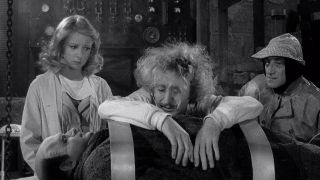
Columbia Said No To Black And White, So Brooks Went To Fox
Here’s a Hollywood deal making story that is the stuff of legends. Young Frankenstein originally had a development deal at Columbia Pictures, with a deal to make and distribute the movie ready to go essentially finalized. However, before the ink could dry, Brooks sticks his head back into the room and adds that they were going to make the movie in black and white before quickly exiting. As Brooks recalled to Jimmy Kimmel in 2014, they followed after him crying, "No, Peru just got color!”
Columbia tried to compromise with Brooks to show the film in black in white in some markets, but color in others. Brooks said no dice.
Fortunately, he found a willing partner in Alan Ladd Jr. over at 20th Century Fox, who famously would also give another landmark film a break (Star Wars). He agreed they could make the film in black and white and Young Frankenstein officially became a 20th Century Fox movie.
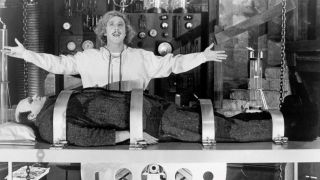
The Production Crew Tracked Down The Original Frankenstein Lab Equipment
As much as Young Frankenstein is a parody of its classic horror film namesake, Brooks and Wilder had great affection for the 1931 film and wanted to do right by it. This was why they pushed to make it in black and white, as well as had their production designer use Charles D. Hall’s original designs for Frankenstein and Bride of Frankenstein for the set.
As luck would have it, they wouldn’t need to recreate a few pieces of the iconic Frankenstein set. In a Los Angeles Times feature, it was revealed that Brooks and his crew were able to track down Kenneth Strickfaden, who created the original electrical equipment used in Frankenstein’s laboratory and still had them in a garage in Santa Monica.
Amazingly, after more than 40 years, when Strickfaden threw the switch, the equipment still worked as it had in the original movie.

Peter Boyle’s Monster Found Love On The Set Of Young Frankenstein
The monster, as he is called in all iterations of Frankenstein, really just wants to be loved. Fittingly, that’s just what happened to Boyle when he was playing the monster in Young Frankenstein.
The Washington Post recounted in its obituary for Boyle that while on set for Young Frankenstein he met Rolling Stone reporter Loraine Alterman, who was there to do an interview with Mel Brooks. Still wearing his monster makeup, Boyle asked Alterman out and she said yes. They were married in 1977 and remained so for his entire life.
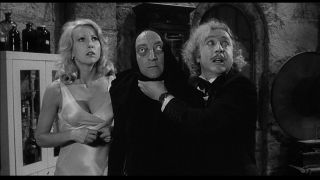
The Crew Used White Handkerchiefs To Stifle Laughs During Filming
Brooks employed an unusual tactic during the filming of Young Frankenstein that has rarely (if ever) been repeated in Hollywood history. He handed out white handkerchiefs to his entire crew and instructed them to put it in their mouths if they were going to laugh so as to stifle it and not ruin the shot. According to what Brooks said to the LA Times (in the previously mentioned article):
Every once in a while, I’d turn around and see a sea of white handkerchiefs, and I said, ‘I got a hit.'
He took a different approach when instructing the extras not to break during the filming of the “Puttin on the Ritz” scene, apparently warning them that anyone who laughed would be arrested.
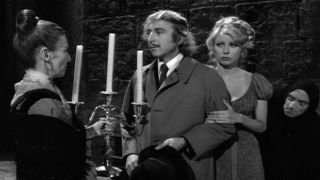
One Scene In Particular Kept Making Gene Wilder Crack Up
Unfortunately, Brooks couldn’t use his white handkerchief strategy with his actors, most notably Gene Wilder. According to co-star Cloris Leachman, Wilder was notorious for breaking during scenes, with one in particular being difficult for the famed comic actor to get through.
In an interview with Jake Hamilton, Leachman recalls the scene where her character Frau Blücher (horses whinny) leads Dr. Frankenstein and Inga up the stairs. She turns to the two guests to warn them, “Stay close to the candles, the staircase can be treacherous.” Leachman went on to say:
As I turn, I turned to Gene and he’d be laughing and his face was in two pieces laughing. It wasn’t funny, I don’t know why.
She said that it took them 15 takes to get the shot, and also fondly recalled how everything she did in the movie "just tickled Gene to pieces."

Gene Hackman Landed His Cameo While Playing Tennis With Gene Wilder
In addition to the cast, Gene Hackman has a memorable cameo in the movie playing a blind hermit who attempts to befriend the monster while he is out rampaging. Of course, because he is blind he doesn’t realize when he pours hot soup on the monster and lights his finger on fire, causing the monster to run away (Where are you going? I was going to make espresso).
Though according to Brooks, the only reason Hackman is in the movie was because he played tennis with Gene Wilder. Brooks told Yahoo Movies that Hackman wanted to give comedy a try and asked Wilder, who starred with him in Bonnie and Clyde, if there was a part in “that crazy movie.” Wilder mentioned the blind priest and he said he was in.
Brooks says that the espresso line was improvised by Hackman.

Brooks Is The Last Filmmaker To Have Two Year-End Top-Five Box Office Films
In the 47 years since Mel Brooks had the one-two punch of Blazing Saddles and Young Frankenstein in 1974, no other filmmaker has been able to pull off what he did - having both of his films finish in the top-five for box office for the entire year. Blazing Saddles finished with $119.6 million and Young Frankenstein finished with $86.3 million, per Box Office Mojo.
In a year that included The Towering Inferno, The Longest Yard and The Godfather Part II, that was good enough for first (Blazing Saddles) and fourth (Young Frankenstein), according to the-numbers.com.
Some of you may be thinking, what about Steven Spielberg? What about 1993 with Jurassic Park and Schindler’s List? Jurassic Park was the top grossing film of 1993 with $338.9 million, but Schindler’s List topped out at $96 million, more than $10 million shy of what Mrs. Doubtfire finished at in the fifth spot for 1993.
Young Frankenstein is currently available to stream on Amazon Prime Video.
D.C.-based cinephile. Will dabble in just about any movie genre, but passionate about discovering classic films/film history and tracking the Oscar race.
Most Popular








